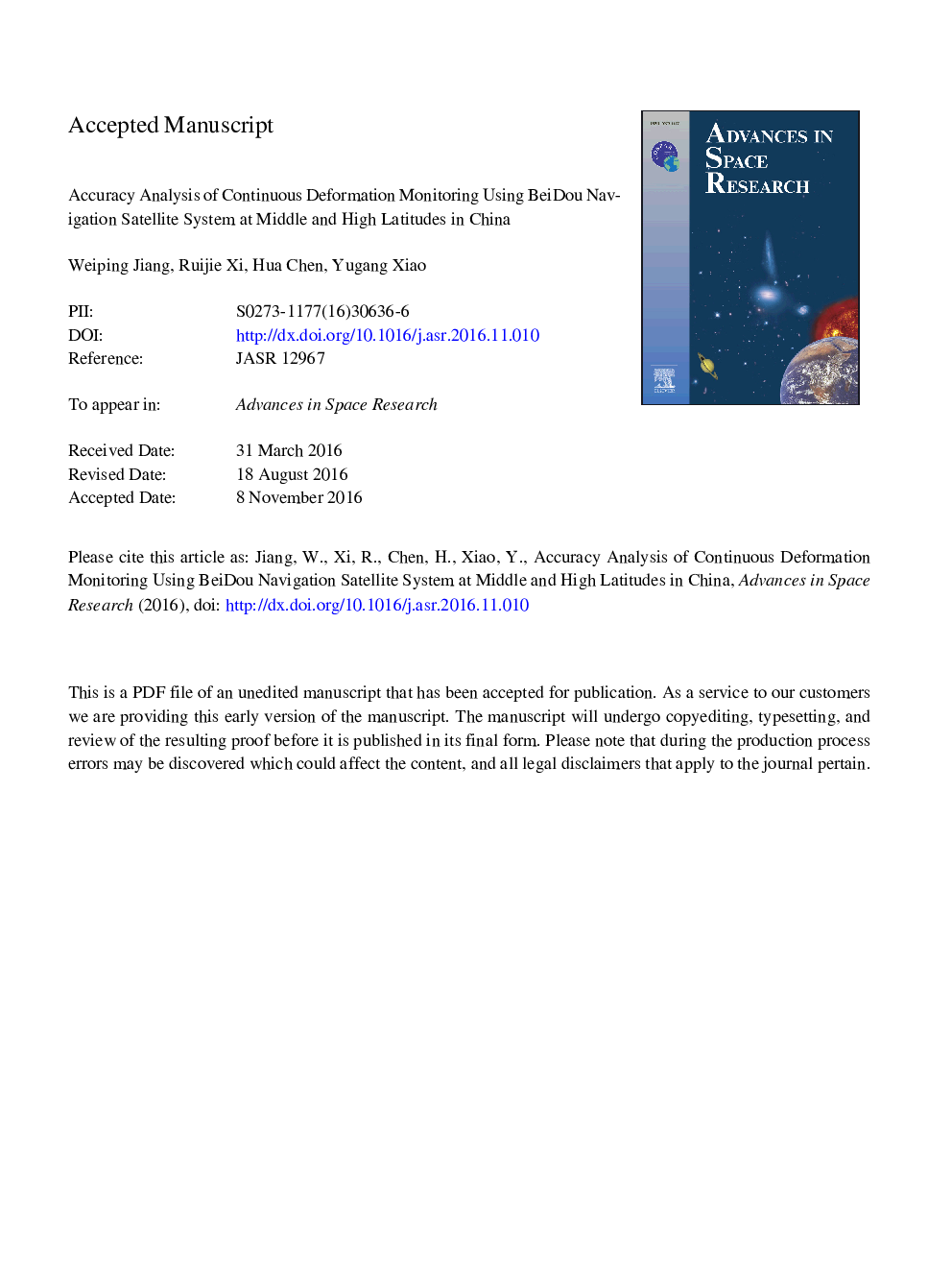| Article ID | Journal | Published Year | Pages | File Type |
|---|---|---|---|---|
| 5486738 | Advances in Space Research | 2017 | 22 Pages |
Abstract
In this paper, two experimental platforms were designed, with one being at mid-latitude and another at higher latitude in China. BDS data processing software was also developed for investigating the accuracy of continuous deformation monitoring using current in-orbit BDS satellites. Data over 20Â days at both platforms were obtained and were processed every 2, 4 and 6 h to generate 3 displacement time series for comparison. The results show that with the current in-orbit BDS satellites, in the mid-latitude area it is easy to achieve accuracy of 1Â mm in horizontal component and 2-3Â mm in vertical component; the accuracy could be further improved to approximately 1Â mm in both horizontal and vertical directions when combined BDS/GPS measurements are employed. At higher latitude, however, the results are not as good as expected due to poor satellite geometry, even the 6 h solutions could only achieve accuracy of 4-6 and 6-10Â mm in horizontal and vertical components, respectively, which implies that it may not be applicable to very high-precision deformation monitoring at high latitude using the current BDS. With the integration of BDS and GPS observations, however, in 4-h session, the accuracy can achieve 2Â mm in horizontal component and 4Â mm in vertical component, which would be an optimal choice for high-accuracy structural deformation monitoring at high latitude.
Related Topics
Physical Sciences and Engineering
Earth and Planetary Sciences
Space and Planetary Science
Authors
Weiping Jiang, Ruijie Xi, Hua Chen, Yugang Xiao,
